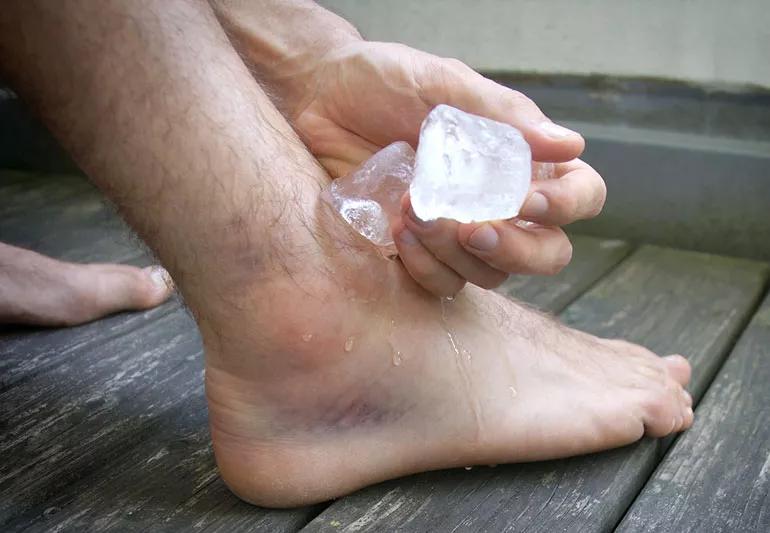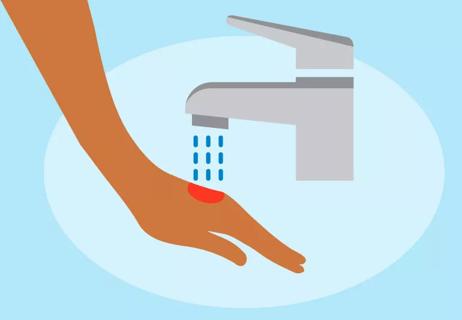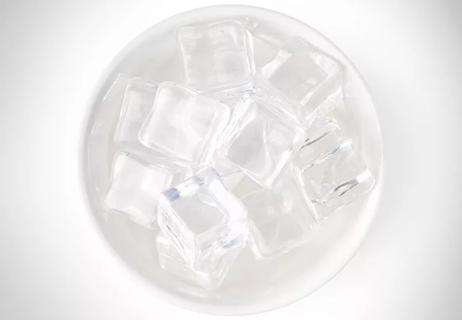Plus, how long to ice an injury and other icing tips

For athletes and athletic trainers, it’s a debate as old as rock-paper-scissors: Which ice pack is best for an injury? From homemade ice packs to gel ice packs, the possibilities are endless. Certified athletic trainer Bob Gray, MS, ATC, breaks down the best options and the A-B-C’s of icing an injury.
Advertisement
Cleveland Clinic is a non-profit academic medical center. Advertising on our site helps support our mission. We do not endorse non-Cleveland Clinic products or services. Policy
With all the ice bags and reusable ice substitutes out there, Gray recommends following the rule of KISS (keep it simple, well, you get the idea). “I’ve been an athletic trainer for more than 40 years. I’m old school. Good, old, all-American ice is the easiest to use, which is why it’s so effective. I prefer crushed ice because you can put it in a bag and take the air out. Then you can conform it to the injured area and secure it down.”
No ice on hand? A bag of frozen peas or corn works too. Other easy-to-use icing methods include:
Advertisement
The bottom line: Most ice is created equal, so Gray recommends icing an injury in a way that fits your preferences and doesn’t hurt your wallet.
Once you have your ice, follow the RICE acronym. RICE is key to proper injury care, so it’s important to learn what it stands for:
Gray says you should try to ice the injury for 10 to 15 minutes every hour for the first 24 to 48 hours. But if life doesn’t allow for round-the-clock self-care (we’re looking at you, job and kids), just do your best to ice it as often as you can. “You want to protect the injured area from any additional swelling, which can happen if you introduce heat too soon.”
And if sitting with an ice bag just isn’t your thing, try ice massage. Ice massage is easiest to do with an ice cup. Simply massage the injury in a circular, counterclockwise motion with an ice cup.
Gray says concerns about frostbite stems from the use of chemical cold packs. Chemical cold packs, depending on the type, have been known to cause some frostbite as they hold their temperature longer. One word of caution: An athlete should NEVER fall asleep with a chemical ice pack on the injured area.
“While you’ve got to be smart, keep in mind we use the immersion technique at major events, such as marathons,” Gray notes. “That’s where you have anywhere between 50- and 100-gallon tubs filled with cold water. When there’s an injury or suspected heat stroke, we immerse the person in the tub as quickly as possible.”
Advertisement
Learn more about our editorial process.
Advertisement

An ice bath can ease sore muscles and decrease inflammation after a workout

What's best for your aches and pains?

Ice (and icy water) can actually make a burn worse, not better

This simple trick can seriously reduce puffiness

Most recommended precautions center around minimizing bruising or swelling

Even one drink can have an impact on your cognitive function leading to slurred speech, blurred vision and impaired memory

Type 2 diabetes isn’t inevitable with these dietary changes

Applying a hot or cold compress can help with pain